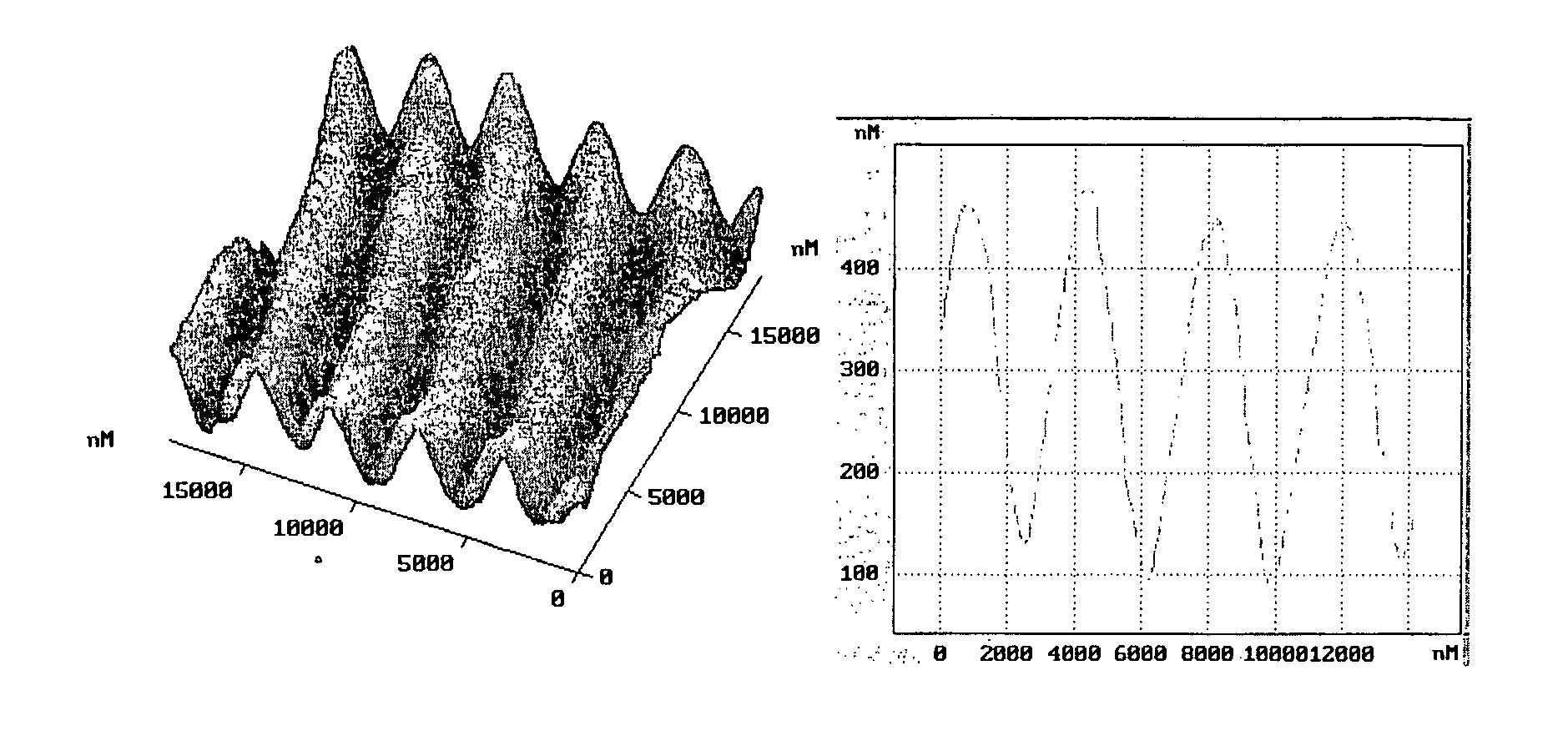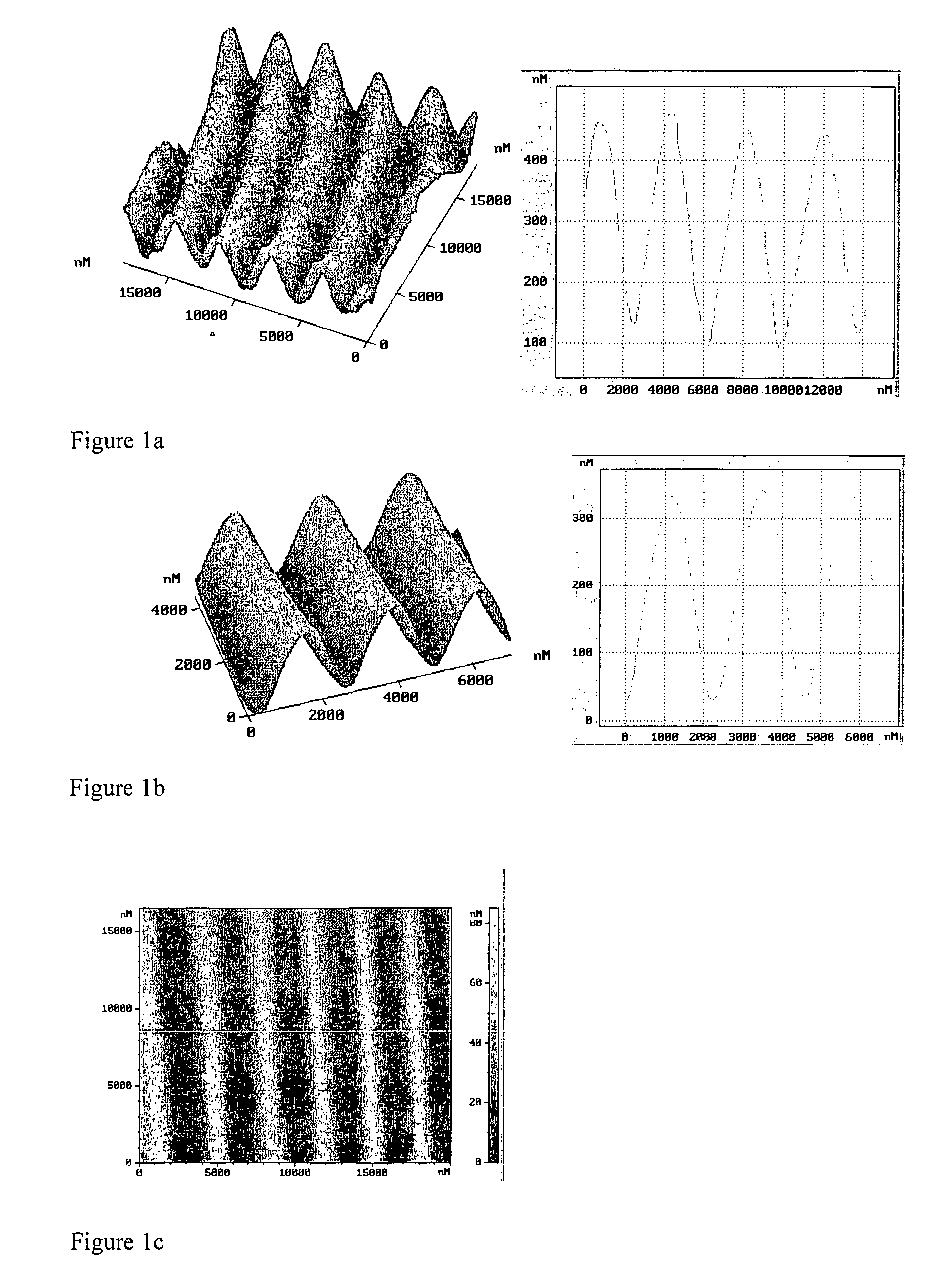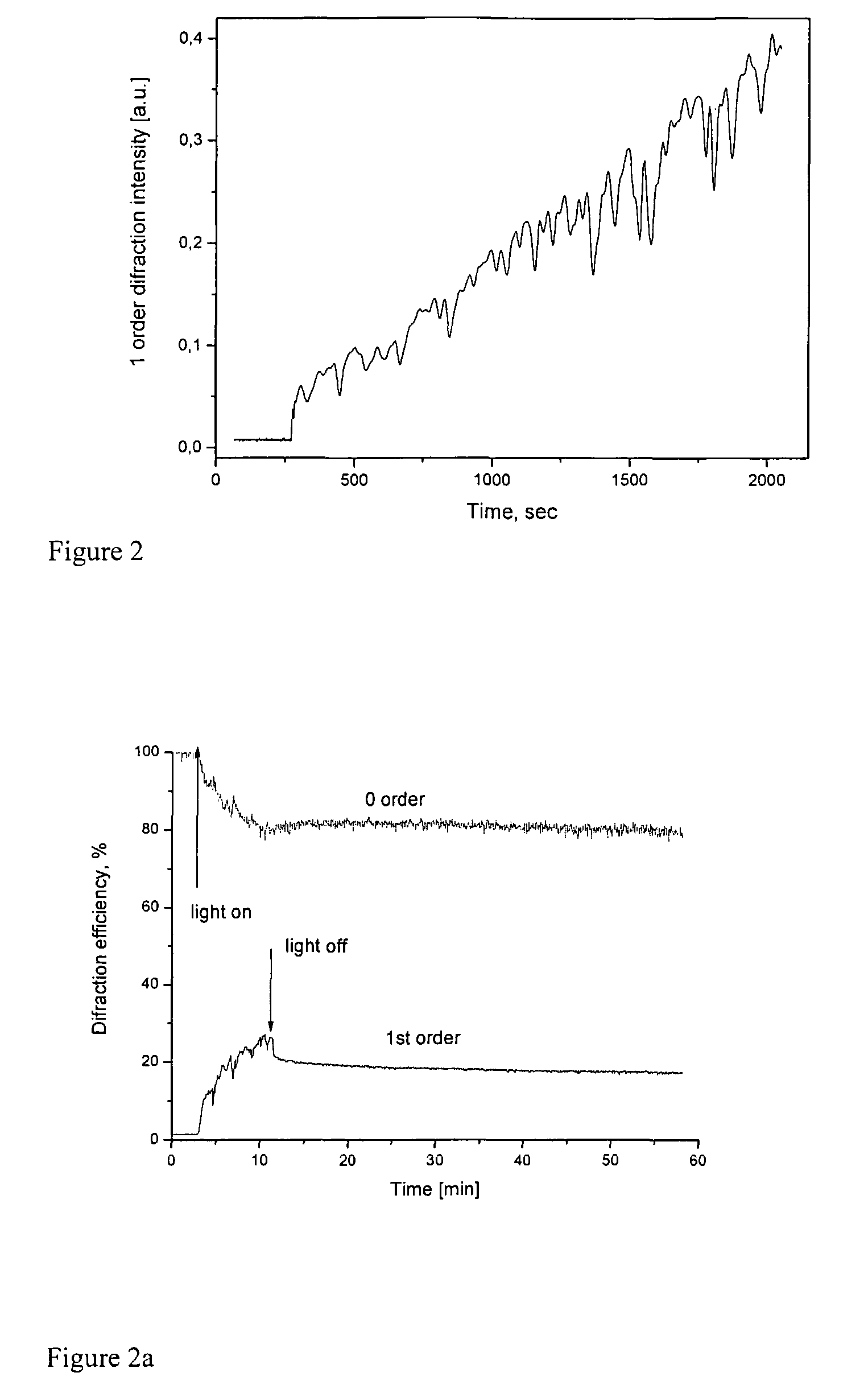Film forming material and preparation of surface relief and optically anisotropic structures by irradiating a film of the said material
a film forming material and surface relief technology, applied in the field of new film forming materials, can solve the problems of weak observation effect, unstable photo-induced dichroism, and ineffective srg formation, and achieve the effect of high induction efficiency
- Summary
- Abstract
- Description
- Claims
- Application Information
AI Technical Summary
Benefits of technology
Problems solved by technology
Method used
Image
Examples
example 1a
Recording
[0077]54 mg of Alizarin Yellow GG (5-(3-Nitrophenylazo)salicylic acid sodium salt, Aldrich) was dissolved in 20 ml of distilled water, 40 μl of 30% aqueous solution polyethyleneimine was added. The deposit was separated by filtration (30 mg after drying) and dissolved in 1 ml of THF, while the mother solution was discarded. A film of about 2 μm thickness was fabricated from the THF solution by casting onto the glass substrate in a close chamber at room temperature. After drying at room temperature in air for 5 h, the film was irradiated with the interference pattern formed by two linearly orthogonally polarized beams with polarisation planes at ±45° to the incidence plane. The irradiation wavelength was 488 nm, and the angle between beams was about of 12° resulting in a period of 2.3 μm. The intensities of interfering beams were equal to 250 mW / cm2, the irradiation time was 40 min. The 1st order diffraction efficiency measured during the recording is shown in FIG. 2. 1st or...
example 1b
Recording
[0078]63 mg of Brilliant Yellow (4,4′-bis(4-hydroxyphenylazo)stylbene-2,2′-disulfonic acid disodium salt, Aldrich), were dissolved in 5 ml methanol and then filtered. 130 mg 30% aqueous solution of polyethyleneimine (Aldrich) was added. Since some deposit was formed, the solution was allowed to settle and decanted. The red mother solution was used for the film preparation. A film of about 3 μm thickness was prepared by casting this solution onto the glass substrate in a close chamber at room temperature. After drying at room temperature in air for 5 h, the film was irradiated for 40 min as described in example 1a. The 1st order diffraction efficiency of the SRG recorded was measured to be 14.5%.
example 1c
Recording
[0079]To 80 mg of Brilliant Yellow (Aldrich) in 2 ml methanol, 130 mg of triethoxy-3-aminopropylsilane (Witco Europa SA) was added. After adding 10 μm concentrated HCl, the solution was left to settle. The clear red mother solution was decanted. A film of about 3 μm thickness was prepared by casting this solution onto the glass substrate in a close chamber at room temperature. After drying at room temperature in air for 10 h, the film was irradiated for 30 min as described in example 1a. The 1st order diffraction efficiency of the SRG recorded was measured to be 8%.
PUM
| Property | Measurement | Unit |
|---|---|---|
| thickness | aaaaa | aaaaa |
| modulation depth | aaaaa | aaaaa |
| thickness | aaaaa | aaaaa |
Abstract
Description
Claims
Application Information
 Login to View More
Login to View More - R&D
- Intellectual Property
- Life Sciences
- Materials
- Tech Scout
- Unparalleled Data Quality
- Higher Quality Content
- 60% Fewer Hallucinations
Browse by: Latest US Patents, China's latest patents, Technical Efficacy Thesaurus, Application Domain, Technology Topic, Popular Technical Reports.
© 2025 PatSnap. All rights reserved.Legal|Privacy policy|Modern Slavery Act Transparency Statement|Sitemap|About US| Contact US: help@patsnap.com



